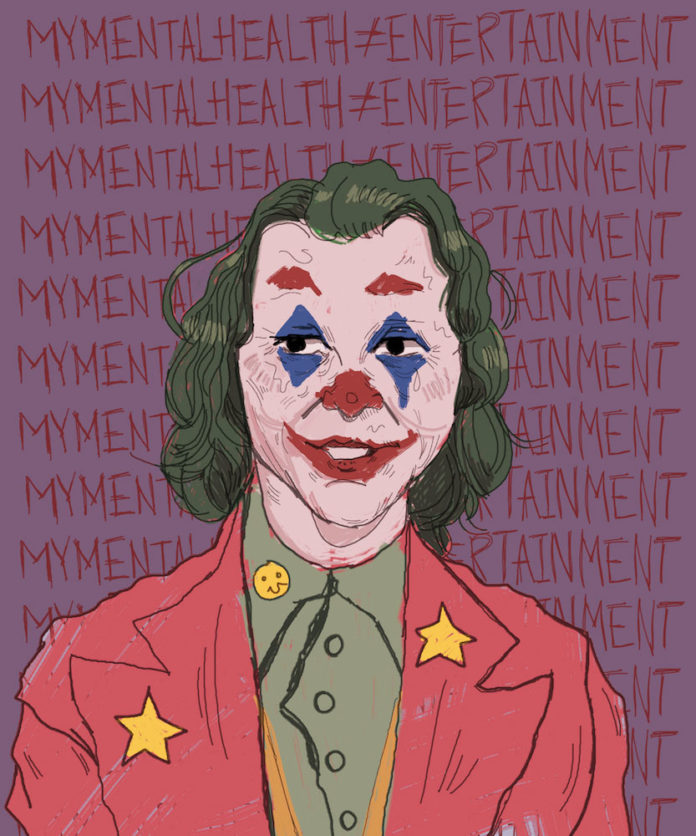On a brisk October morning, I decided that it would be a good idea to see Todd Phillips’s “Joker” and ruin the next 14 hours of my day. Although the film was an emotionally draining rollercoaster, it was positively received by the public and film critics alike. The billboards, memes and ads have completely infiltrated mainstream culture, leading the film to break records and win prestigious awards such as the Venice Film Festival’s Golden Lion. With a compelling and intense performance from Joaquin Phoenix as the main character and an intricate storyline, “Joker” is a likely contender for praise during awards season.
But the film doesn’t do everything right. The Joker’s backstory strays away from the most consistent story used in comics. Phillips explains that instead of deriving inspiration from one comic in particular, the creators of the movie “picked and chose what we liked.” The possibilities for the origins of this character are undefined and up to anyone’s interpretation, but the creators of this film instead chose to deliberately construct a backstory that increases stigma around mental health.
The story of Arthur Fleck becoming the Joker revolves around his history of mental illness. This leads the audience to associate Fleck’s mental illness and history of abuse with his violent and murderous behavior. The association reinforces stigmas surrounding mental illness when mass media should work toward tearing down misconceptions.
“Joker” reinforces the idea that mental illness is synonymous with violence. The film begins with Fleck in a meeting with a painfully apathetic social worker who eventually tells him she can no longer meet with him because funding for the program has been cut (as if her therapy was productive for Fleck to begin with). The audience learns about Fleck’s neurological condition that prevents him from controlling his laughter, and the movie flashes back to memories from Fleck’s hospitalization. Fleck is admitted to the Arkham State Asylum, the notorious Gotham mental hospital where several villains in the Batman universe have also been admitted. “Joker’s” Arkham is all white and completely barren, feeding into depictions of behavioral hospitals as sterilizing centers for the “impure.” Throughout the movie when Arkham is shown, the camera focuses on patients with impulsive and uncontrollable behavior, which maintains the idea that everyone in a mental hospital is maniacal.
The climax of the violence in the film occurs after Fleck has stopped taking his medication. He then embarks on a killing spree against old coworkers and his mother. This sequence of actions implies that violence is typical when a person stops taking psychiatric medication. This content can not only be alarming to people who take psychiatric medication and increase the fear of switching medications or transitioning off medications, but it can also create stereotypes about psychiatrically-medicated people. As someone who has been on multiple types of psychiatric medication, the doctor’s alarming warning of side effects of changing or transitioning off medications are scary enough. “Joker’s” stereotype about being “off the meds” definitely made me nervous about changing medications in the future.
Although many will say movies don’t have a responsibility to advocate for politically-charged issues, we should care about how movies portray mental illness. Media representations serve as mental illness reference points if viewers haven’t experienced mental illness themselves or been around people with mental illnesses. It is especially imperative to critique widely-circulated and critically-acclaimed films like “Joker,” because its accessibility and popularity make it spread at a rapid rate to the majority of society. In 1999, “Girl, Interrupted” romanticized mental illness so much that websites like “O’mighty” sell fashion based on the hospital garments that patients wore in the film. It’s upsetting that movies haven’t acknowledged mental health stigmas within the last 20 years. We are more able to discuss mental illness now more than ever; social media and the internet connect people to resources and others with similar experiences. Movies need to reflect the people who watch them and not dismiss those who deal with mental illness.
Filmmakers should use their platform to accurately represent mental illness in order to validate mentally ill people and their struggles. I’m not calling for all filmmakers to necessitate their work to creating lasting social change. But if they choose to heavily depict mental illness, an accurate portrayal is integral so that audience members do not leave the theater believing mental illness is violent or sexy. As artists in the public sphere, filmmakers have a responsibility to not reinforce stigmas that can potentially misrepresent people with mental health issues. If you choose to watch the “Joker,” do so with a critical eye.
McKenna Matus is an undeclared first year. She can be reached at mmatus@oxy.edu.
![]()



































